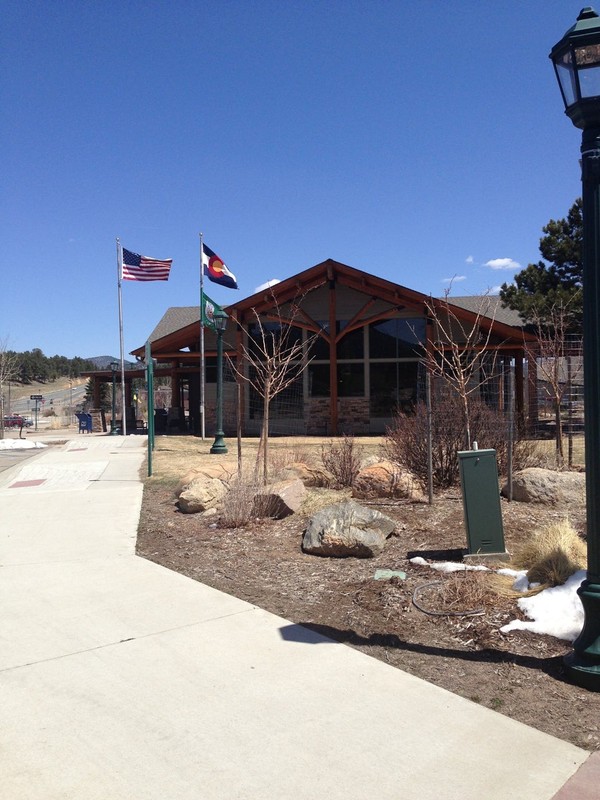Estes Park and Elizabeth Mary Ann Foot
Introduction
Text-to-speech Audio
Located in northern Colorado, at the base of the Rocky Mountain National Park, Estes Park’s natural landscape and surroundings attracted people. Like every U.S town, Estes Park’s history starts with the people who originally inhabited the valley: the Ute and Arapaho tribes. The Ute and Arapaho people first came to the Estes Valley about ten thousand years ago, where they thrived until the nineteenth century, when white settlers came to the Colorado territory in search of gold. Starting in the 1860s, men like Joel Estes and Abner Sprague established settlements in the valley. From making the strenuous hike to Longs Peak, to establishing homesteads to better reflect their love for nature, to maintaining ranches to grow sustainable crops in the valley, their contributions to Estes Park’s development make the town’s history more complete.
Images
Estes Park Visitor Center

Backstory and Context
Text-to-speech Audio
Elizabeth Mary Ann Foot, born in 1871 in England, was a cornerstone of the Estes Park economy. While taking care of her younger siblings, she also successfully entered the real estate business. In the late 1880s, Foot visited Estes Park with her friends. She must have fallen in love with the mountain town; she decided to purchase property on the Fall River, which currently serves as the parking lot for Performance Park. [Foot then erected a “collection of tent lodgings for summer visitors. By the 1930s, she had developed those into cottages for rental.”]
Foot opened a general store in 1891 where she sold “everything from needles to Sloan’s liniment and lemons.” In 1906, Foot relocated her store to the corner of Elkhorn and Moraine to make room for Josephine Jose Hupp’s new hotel. As businesses boomed with tourism, the property became prime real estate. Soon other entrepreneurs arrived in the mountain town. Foot decided to leave the mercantile business, but her long-lasting business success allowed her to become an Estes Park philanthropist by the mid-twentieth century.
In 1950, Foot’s generous donations led to the construction of the Estes Park Chamber of Commerce in Bond Park. The town erected a plaque with Foot’s words: “In this gracious valley, under the protective vigilance of the everlasting hills, may our visitors find surcease. With affectionate loyalty to Estes Park, my home for sixty years, I give this building.” Foot’s time in Estes Park ended when she moved into a senior care facility in Garden Grove, California in 1954. She died in 1966 aged 95. Foot’s successful businesses helped strengthen the tourism trade in Estes Park.
Cite This Entry
History 640, CSU. "Estes Park and Elizabeth Mary Ann Foot ." Clio: Your Guide to History. December 9, 2022. Accessed April 18, 2025. https://theclio.com/tour/2381/2
Sources
Crockett, Joanie. “100 Years – A Celebration of Women: Elizabeth Mary Ann Foot.” Estes Park Trail Gazette. Last modified December 7, 2020. https://www.eptrail.com/2020/12/07/100-years-a-celebration-of-women-elizabeth-mary-ann-foot/.
Pickering, James H. America’s Switzerland: Estes Park and Rocky Mountain National Park, the Growth Years. Boulder: University Press of Colorado, 2005.
https://foursquare.com/v/estes-park-visitors-center/4ba3b805f964a520f45738e3?openPhotoId=517c1e5b498e7ee2a07e159c

